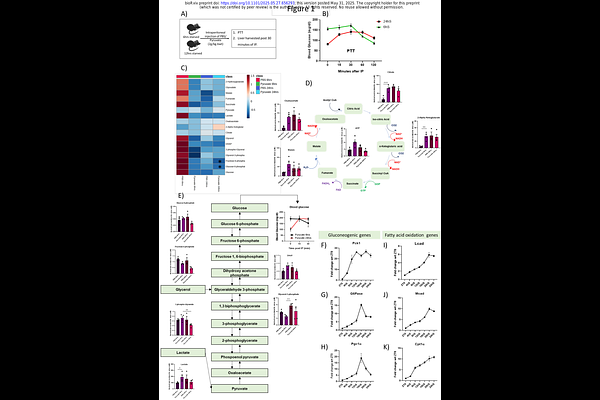SIRT1-IDR-Driven Temporal Gating of Sequential Transcription-Factor Recruitment Coordinates Fasting Adaptation

SIRT1-IDR-Driven Temporal Gating of Sequential Transcription-Factor Recruitment Coordinates Fasting Adaptation
Shukla, A.; Chakrabarti, S.; Balaji, C.; Kolthur-Seetharam, U.
AbstractPrecise temporal control of gene expression is critical for metabolic adaptation, yet how transcriptional regulators coordinate dynamic responses to nutrient stress remains poorly understood. Here, we identify the intrinsically disordered region (IDR) of SIRT1, encoded by exon-2 (E2), as a key determinant of transcriptional timing during fasting. Using global and conditional SIRT1{Delta}E2 mouse model, which mimics an endogenous transcript variant, we demonstrate that loss of the N-terminal IDR disrupts the hierarchical engagement of transcription factors (TFs), leading to premature and exaggerated activation of gluconeogenic genes. Mechanistically, the IDR acts as a conformational timer, competitively gating SIRT1 interactions with CREB, FOXO1, and PPAR to ensure sequential TF recruitment and resolution. Absence of this regulatory module resulted in runaway CREB activity, aberrant hepatic glucose output, and impaired fasting-refeeding transitions, linking IDR-driven temporal control to systemic metabolic homeostasis. Our findings reveal a paradigm wherein IDRs in upstream metabolic sensors orchestrate transcriptional handovers, offering a molecular basis for the dynamic rewiring of gene networks during physiological transitions. This work expands the functional repertoire of disordered regions beyond TFs, positioning them as critical nodes in nutrient-responsive transcriptional circuits and potential targets for metabolic disorders.